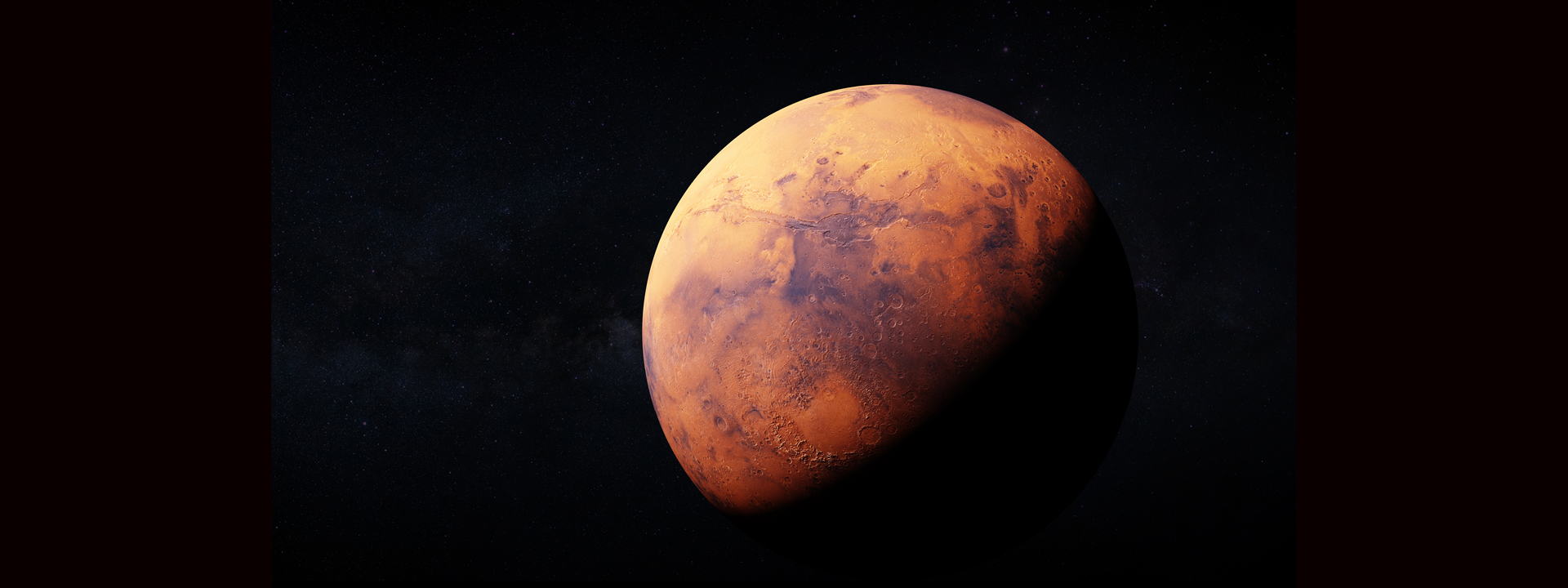
“Quantifying radiological risk for mission launch to key decision makers”
Sandia has led space nuclear launch safety for both the Department of Energy (DOE) and the National Aeronautics and Space Administration (NASA) since 2006. Meanwhile, Sandia’s engagement in space nuclear launch safety in an advisory and supporting role dates back to the Cassini Mission in the 1990s.
The goal of safety analysis is to characterize a quantitative estimate of radiological risk to provide information on how the mission compares against launch criteria established in National Security Presidential Memorandum 20 (NSPM-20) and provide a defensible and credible report for achieving launch approval. In addition to this goal, the safety analysis provides insights into how the nuclear safety of the mission can be improved to reach acceptable levels of residual mission risk. Sandia seeks to continue to deliver excellence and robust research and development in launch safety analyses for all customers and stakeholders.

Why Sandia performs Space Nuclear Systems Launch Safety
Due to the potential for release of radioactive material into the environment during a launch or earth-flyby accident, a safety analysis is required to assess the potential hazards from launch or return-from-orbit accident scenarios.
Sandia’s approach to Space Nuclear Systems Launch Safety helps identify the main sources of risk. Risk identification allows for potential mitigating actions to reduce negative outcomes associated with mission failure. Additionally, Sandia implements risk estimation methodologies that include detailed simulations and Monte Carlo sequence codes to develop probabilistic risk analyses.
The goal of the safety analysis is to determine a quantitative estimate of radiological risk for use by decision makers. The risk analysis also provides information to mission designers on areas where nuclear safety could be improved, such as making modifications to the launch vehicle, space vehicle, or mission architecture. Such changes are best made early in the mission design to reduce budgetary or schedule impacts to the mission.
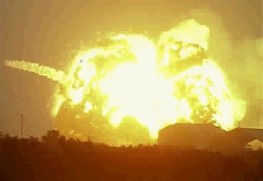
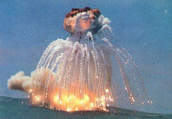
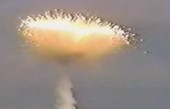
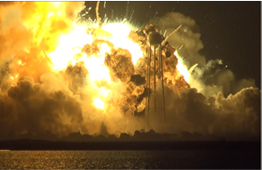
How Sandia is Involved
Sandia researchers leverage state of the art supercomputers and computational codes to identify and quantify risks of a mission involving radiological or nuclear material and work with the mission to generate a safety analysis report. This work involves working with the launch provider, mission, and launch facility to understand accident scenarios and quantify uncertainty in accident rates, material properties, etc. Sandia then simulates the blast, fire, impact, and reentry environments to understand how the space and launch vehicles respond to anomalous environments. These environments and accidents are then developed into accident scenarios in which various sequences of insults are applied to yield an estimate of how much nuclear or radiological material is released. From this estimate, environmental transport and human health codes provide an understand of impacts such as potential cancers, area of contaminated land, and the probability of exceeding thresholds called out in NSPM-20. Along the way these analyses not only provide the ultimate decision makers with defensible and credible analyses upon which to base their decisions for go/no-go on launch, but also means for missions to improve their designs and enhance safety.
The Safety Analysis Report (SAR) for the Multi-Mission Radioisotope Thermoelectric Generator (MMRTG) in the Perseverance rover provides an excellent example of how Sandia engaged DOE and NASA to provide the analyses they needed to launch. These analyses helped the Mars 2020 mission understand the implications of the unlikely event of an accident, and the potential hazards from release of radioactive material from the MMRTG to the safety of the Earth’s environment and people.
In this process, Sandia teams with experts from other national labs, universities, and government agencies to provide a defensible and credible Safety Analysis Report. The report explains the details and rigorous processes the team used when making critical analyses. With Sandia’s commitment to excellence, the space mission involving nuclear or radiological material is vetted for safety and success and backed by the extensive experience and expertise that has supported launches involving these potentially dangerous materials for decades. Sandia’s deep expertise and esteemed reputation for excellent help enable the success of the Mars 2020 launch approval and can serve to aid subsequent missions achieve success.
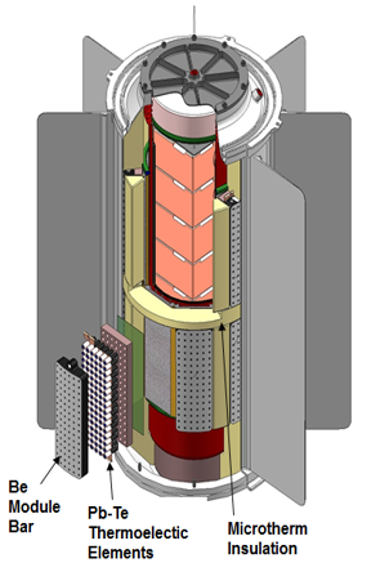
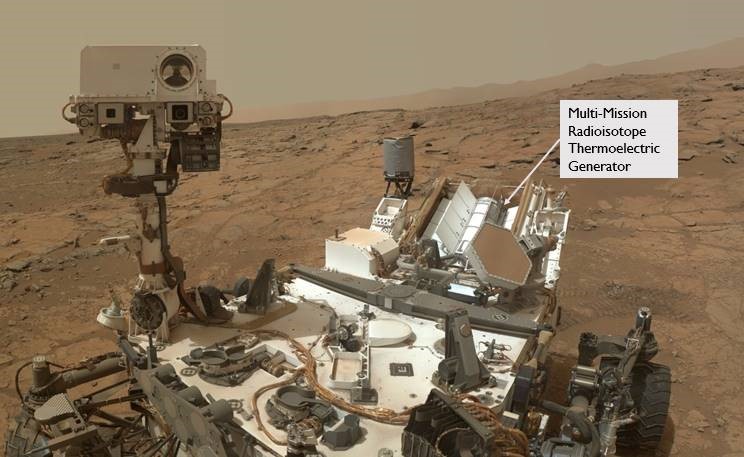
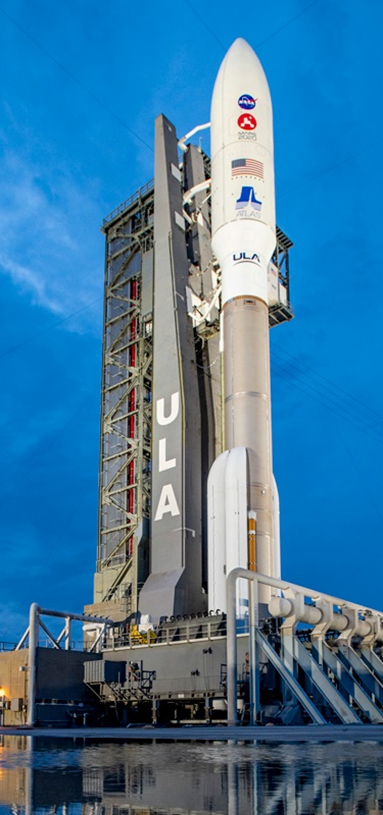
Depicted above are the MMRTG components, where it is placed on the rover, and how it is transported to Mars via the launch vehicle.
Sandia’s specific role in space launch safety analysis
Sandia performs the phenomenological modeling of the accident scenarios using the Radiological Off-Nominal Consequence Quantification and Evaluation Toolset launch safety code suite (ROCQET) that includes:
- Blast
- Impact
- Criticality
- Fire / Thermal
- Reentry
- Accident sequence options
- Atmospheric transport
- Consequences
Sandia quantifies the results into a probabilistic estimate of radiological risk and documents the analyses in a Safety Analysis Report (SAR).
The SAR provides the results of the safety assessment and is an essential document in the nuclear launch safety approval process. During preparation of the SAR, Sandia interfaces with multiple agencies as needed. For example, for the Mars 2020 mission Sandia interfaced with DOE, NASA Jet Propulsion Laboratory (JPL), Interagency Nuclear Safety Review Panel (INSRP), Idaho National Laboratory (INL), and Los Alamos National Laboratory (LANL).

Projects
Sandia has demonstrated direct involvement with Space Nuclear Launch Safety through the generation of the Mars Science Laboratory (MSL) 2011 and Mars 2020 Final Safety Analysis Report (FSAR). Research conducted by scientists at Sandia, government agencies and academic institutions culminated to a critical narrative describing the analyses and processes involved in making mission launch both safe and successful. Additionally, Sandia was involved in the Mars 2020 Nuclear Risk Assessment (NRA) supporting the Mars 2020 Mission Environmental Impact Statement. Sandia also engaged in the Cassini and Pluto New Horizon assessments.
Current Projects
Sandia is performing scoping studies, preliminary tier evaluations, and safety analyses to quantify the risks of potential launch accident environments for other space nuclear systems developed by other customers and comparing them against the safety guidelines in NSPM-20. This information can then be used to consider the safety implications of the designs and allow for modifications as needed to reduce the overall risk. Furthermore, Sandia is working together with other customers to further the effort to ultimately obtain launch approval of upcoming potential missions. Current missions being supported include:
- DARPA and NASA DRACO scoping studies and safety analyses
- Charles Stark Draper Laboratory scoping studies and safety analyses
- Zeno Power systems scoping studies, preliminary tier evaluations, and safety analyses
- Lockheed Martin Space Systems scoping studies
- City Labs scoping studies
- Air Force Research Laboratory scoping studies
Past Projects
Project Summary:
Sandia partnered with NASA’s Mars Science Laboratory (MSL) mission to generate a Final Safety Analysis Report (FSAR) for the 2011 Curiosity rover launch. Due to the radioactive material that was contained in the Multi-Mission Radioisotope Thermoelectric Generator (MMRTG), a safety analysis needed to be performed to model accidents and potential release of material into the environment. Launch approval was supported by the FSAR generated by Sandia and ultimately, launch approval was given. The MSL mission successfully launched from Cape Canaveral and landed on Mars. A link to a publicly available conference proceeding discussing the MSL source terms is provided below.
Principal Investigator:
Managers:
Project Summary
Sandia worked with NASA’s Mars 2020 mission to support the initial Environmental Impact Statement (EIS). NASA prepared an EIS in 2013-2014 in accordance with the National Environmental Policy Act – NEPA. Included in the EIS is information on the launch accidents risk to the general public and on-site workers at the launch complex. The Nuclear Risk Assessment documented the initial analyses of the Multi-Mission Radioisotope Thermoelectric Generator (MMRTG) during potential accident conditions for the Mars 2020 mission. The EIS was successfully issued and the Mars 2020 mission was able to proceed. A link to the publicly available Mars 2020 Nuclear Risk Assessment is provided below.
Principal Investigator:
Managers:
Project Summary
Sandia partnered with NASA’s Mars 2020 mission to generate a Final Safety Analysis Report (FSAR) for the 2020 Perseverance rover launch. This mission included the use of radioactive materials in a single Multi-Mission Radioisotope Thermoelectric Generator (MMRTG) to provide continuous power and heat for the mission. The radioactive nature of the fuel requires that safety and environmental protection be an inherent part of the design. The nuclear risks associated with the mission are described in an 1800-page mission FSAR, detailing the analyses and rigor involved in following standards that lead to safety and mission launch success. A link to the publicly available update to the Mars 2020 NRA based on the results from the Mars 2020 FSAR is provided below.
Principal Investigator:
Managers:
Contact
John Fulton, jdfulto@sandia.gov
Dan Clayton, djclayt@sandia.gov
Publications
Sandia publications related to this research can be found through OSTI.GOV.